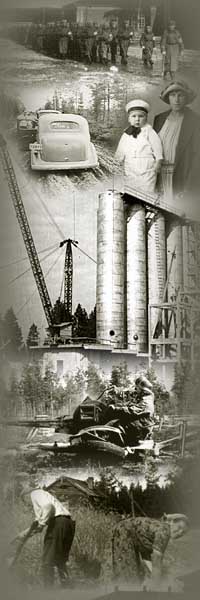 |
 |
|
Jari Okkonen & Janne Ikäheimo: On the
archaelogical remains of Linnakangas in Kannus and Hiidenlinna in
Himanka
The article contains descriptions and topographical analyse of two
prehistoric sites with remarkable variety of stone structures located
in Central-Ostrobotnia, i.e Linnakangas in Kannus and Hiidenlinna in
Himanka. Remains of this kind usually classified as uncertain
prehistoric burial mounds, datable to the Bronze or Iron Age, athough
most of them are located geologically at the Stoone Age attitude level
as deduced from modern land uplift aculations. All the remains were
categorized by a shape-critical procedure, the terminology for which
has partly been adapted from Swedish scholars.
The total number of remains at linnakangas in kannus was seven, six of
which were constructed in a boulder-stone deposit. Two of the stone
constructions were interpreted as hut bottoms and another two as
stroage and conservation pits, while the function of the others
remained quite obscure. Another hut bottom, found about 50 metres away
from the main site, was an oval hollow in a podsolized soil and it
resempled with hut bottoms of the Madeneva type known from the Stone
Age. After examing topographical elements and finds made by the
authors and previous researchers (including a stone chisel and some
quartz flakes), it is guite certain that this site was used as a
temporary dwelling place for a coastal hunting and fishing population
during the 3rd millennium B.C., which in relative terms means the late
Stone Age.
Altogether twenty-seven structures were recorded at Hiidenlinna in
Himanka. Basically, the Hiidenlinna site has the same functional
combination of stone formation types (including a separate hut bottom)
as at Linnakangas, but a significant difference can be noted
concerning these two sites.
The largest stone feature at Hiidenlinna, which encircled nearly all
the other formations, has to be classified as giant church. This
large, oval stone wall must be interpreted as man-made, because of its
regular shape and differences in height between the parts. Bearing
this mind the whole archaeological complex seems to indicatethat such
sites were used as temporarybases for coastal food gathering.
Hiidenlinna (3200-2200 B.C.) appears to be roughly contemporary with
the Linnakangas site.
Various combinations of stone features are common at the "cairn sites"
known so far in Central and nborthern Ostrobothnia, including types
which cannot be related to Bronze or Iron Age burials. Because of the
burial oriented stone mound research tradition in Finland,
archaeological sites like those presented above have frequently been
ignored or misinterpreted. The article attemps to draw attention to
the other uses of such sites.
Faravid
16/1992
|
 |